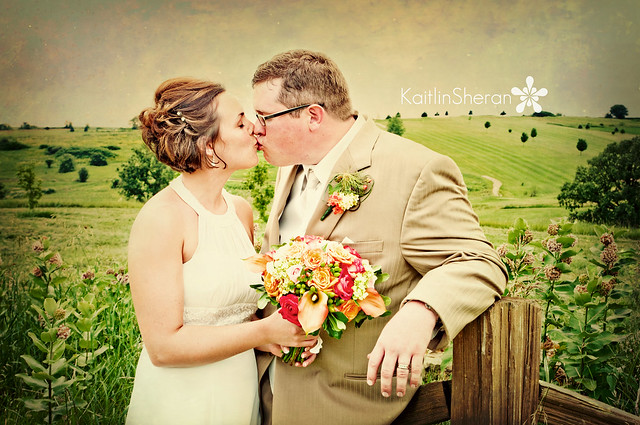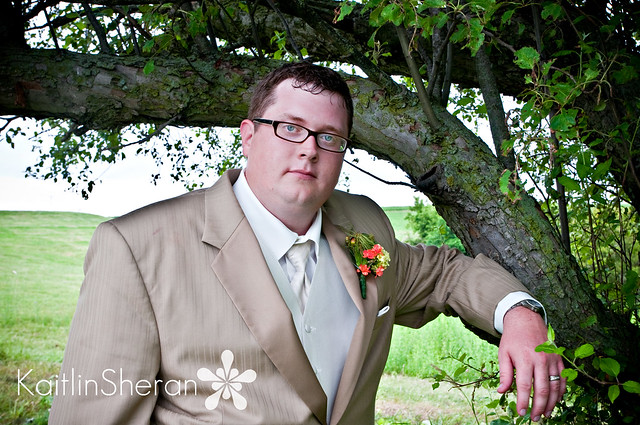Hello Friends!! It has been too long–I just got home from a fabulous and productive trip to Florida, less than a week ago and things are certainly in full swing! Check back later in the week for a blog post from the {Sladich/Brunker} wedding I recently shot with Jenn VanWyk!
I went to Florida with one mission and one mission only–to find my wedding dress and my bridesmaids dresses for my July 2011 nuptuals–and, well, Mission Accomplished!! And I LOVE LOVE LOVE them all! However I must admit, I got more excited about picking out all of our shoes!
Anyhow, more on that later–for now we need to discuss Flare and Guide Numbers! This week we are going to go over two topics in one post, since I missed last week’s lesson due to my mini hiatus! Enjoy!
Flare!
Most commonly, and simply put: Flare is light that doesn’t belong in an image (or does it?). This light usually takes the shape of the aperture, and usually is caused by shooting toward the light source. Or shooting with the light source in-front of you rather than behind you. When flare happens in an image, the contrast in the image reduces. And often colors become sort-of washed out.
Here are some examples from my recent engagement shoot:
While I achieved the look I was going for with these images, sun flare can also ruin an image if you aren’t careful. It takes a lot of practice to really be able to achieve the look you want. If you are interested in learning how to get a little flare in your shots, don’t be afraid to shoot into the light!! I know I know, it seems so against the grind–but really it can be a lot of fun!
Here are some tips to help you achieve the artistic sun flare you desire:
1. Shoot into the Sun: To me, this is rule number one! Lens Flare is caused by strong rays of light directly hitting your lens and causing a slight sun burst. Capitalizing on the direction of your light is the key to capturing Lens Flare.
2. Backlighting!: Place your subject in front of you, with their back to the sun. Your subject will be backlit as though you were capturing a silhouette.
3. Use Manual Mode: Your camera will expose the scene for the total amount of light in the photo. If you follow the camera’s metering, you will be left with a silhouette as it tries to compensate for the amount of light. Shooting on Manual will enable you to over-compensate for the backlight, so your subject is perfectly lit – even with the over exposed background. You just have remember that you have to overcompensate! If you aren’t used to using manual mode, the hardest thing, in my opinion, is to remember to fix your exposure number! Remember if you shoot in the sun you need to compensate for the shade! ( Expect to miss a great shot or two (or ten) while learning manual mode!)
4. Shoot at an angle: Because you want an image with Lens Flare [and not simply over exposure], you need to remember one thing: Camera position to the sun. This will largely depend on what time of day you shoot. In the mornings or evenings, you will have an easier time of shooting directly into the sun. But at mid day this changes. You will need to position yourself fairly low to the ground in order to shoot into the sun.
5. Watch your focus: Your camera typically will focus on the object best lit in your frame. Shooting into the sun will make it more challenging for your camera to focus on your subject. You may need to switch from auto focus to manual focus (but in my opinion that can be equally as difficult!).
{Thanks to Digital Photography School for these great tips!}
Guide Number
The guide number serves as a guide to proper exposure when using flash. When the guide number
is divided by the flash-to-subject distance, the correct aperture for proper exposure is determined. Guide numbers may be quoted in meters or feet, according to which system is used for the measurement of distance. I’ll admit, this is NOT my area of expertise. However, on beginning-photography tips.com there is a very informative piece on flash photography that I found very helpful. I hope you do too!
{A flashes efficiency is determined by its power, or light output. A more powerful flash will have a greater output and reach subjects that are farther away. Also with more powerful flashes a smaller f-stop can be used for greater control of depth of field.
The way to determine the power of a flash is to check the owners manual for the flashes Guide Number (GN). GN’s range from 40 to 160, with 160 being the most powerful. GN’s are determined by the manufacturer, based on ISO, flash zoom and light output control. GN’s change with adjustments of the flash zoom and light output.
If you are comparing flash units GN’s, make sure the numbers are based on equal factors. Different manufactures may base there numbers on meters instead of feet, or they may base the GN on different film speeds.
The GN can be used to determine exposure settings. Dividing the GN by the distance between the flash and subject will give you the f-stop number. Most flash units will have a calculator or chart to help figure exposure settings.
GN’s were determined my the manufacturer in average conditions, such as an indoor white room and neutral subjects, so the GN is not the only factor used in determining exposure. For instance, if you are shooting outdoors, with no walls that bounce light, you may need to adjust the f-stop down.}
I will post a separate posting for my Florida pictures. I decided, by the way, that since all the pictures were taken in Florida, I could make an exception and not capture only F images 🙂
Happy Shooting!!
.png)
.png)







